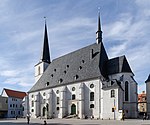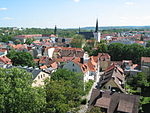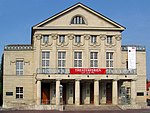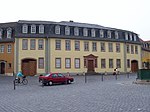Weimar station
Buildings and structures in WeimarNeoclassical architecture in GermanyRailway stations in Germany opened in 1846Railway stations in Thuringia
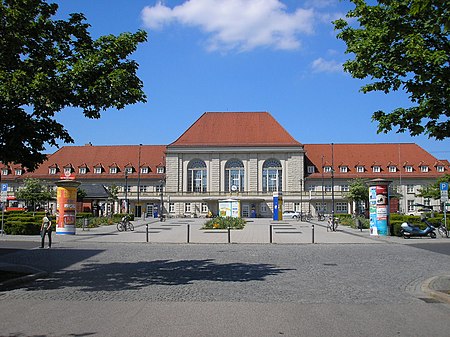
Weimar station is the main station in the city of Weimar in the German state of Thuringia, located on the Thuringian Railway. It is an Intercity-Express stop on the line between Frankfurt am Main and Dresden. Weimar station is classified by Deutsche Bahn as a category 3 station. It is officially designated as a KulturBahnhof ("culture station”), as the station's panels are noted. It is about one kilometre north of central Weimar at the end of the street of Carl-August-Allee.
Excerpt from the Wikipedia article Weimar station (License: CC BY-SA 3.0, Authors, Images).Weimar station
Rastenberger Tunnel,
Geographical coordinates (GPS) Address Nearby Places Show on map
Geographical coordinates (GPS)
| Latitude | Longitude |
|---|---|
| N 50.991666666667 ° | E 11.326944444444 ° |
Address
Weimar
Rastenberger Tunnel
99427 , Nordvorstadt
Thuringia, Germany
Open on Google Maps




